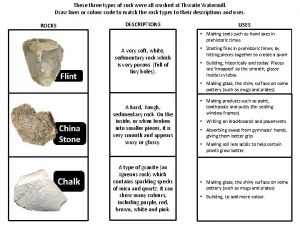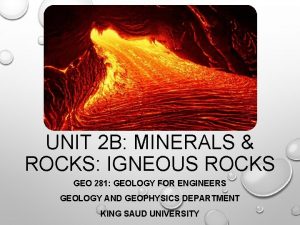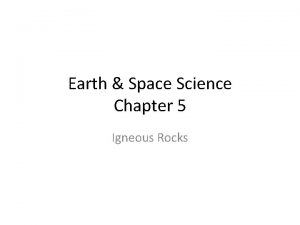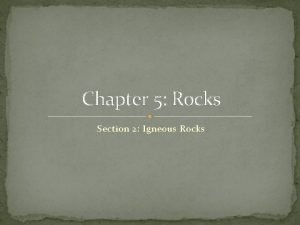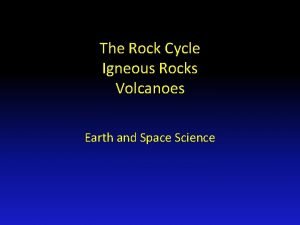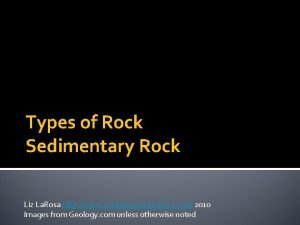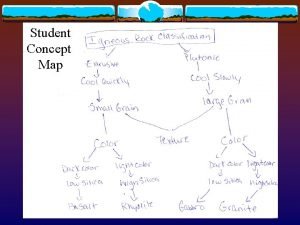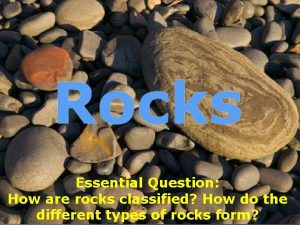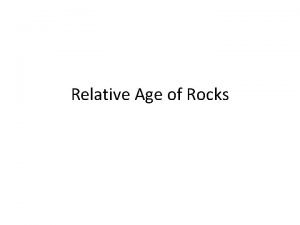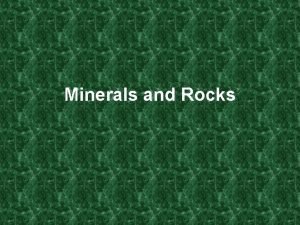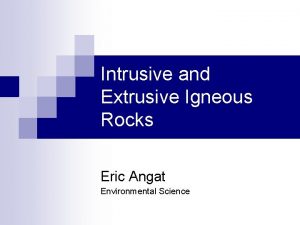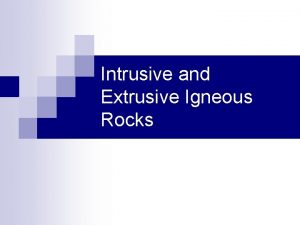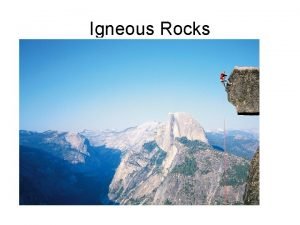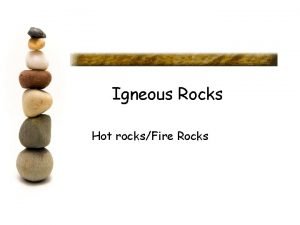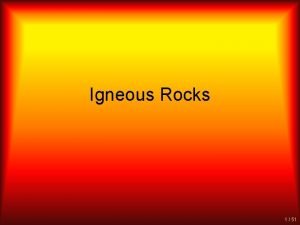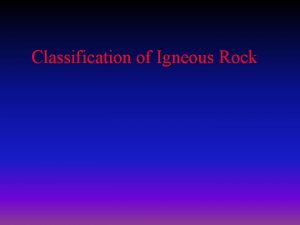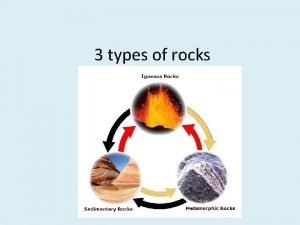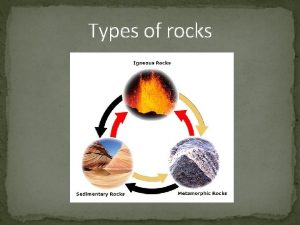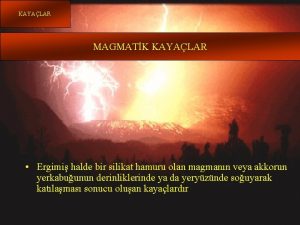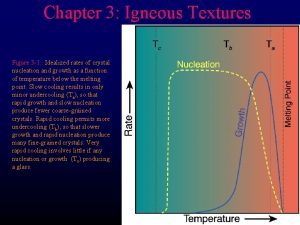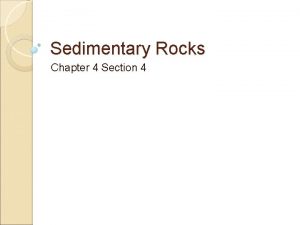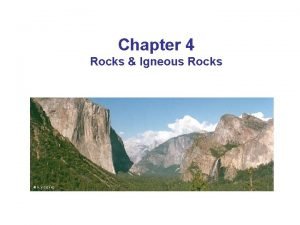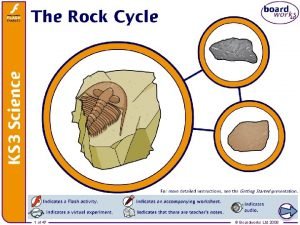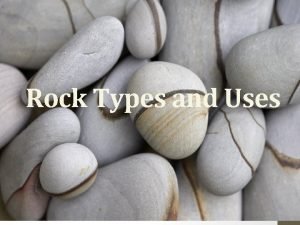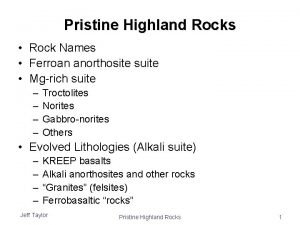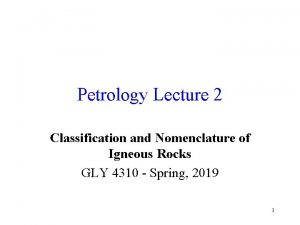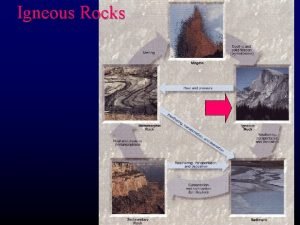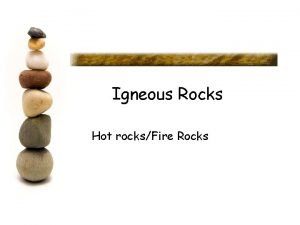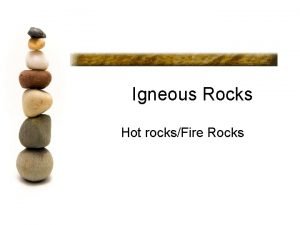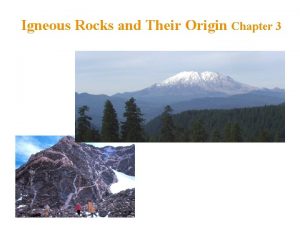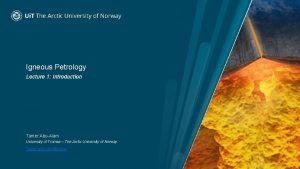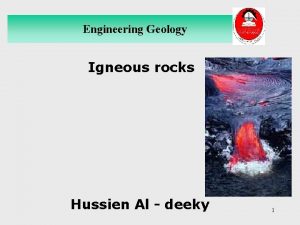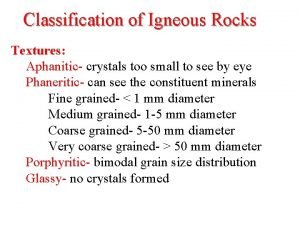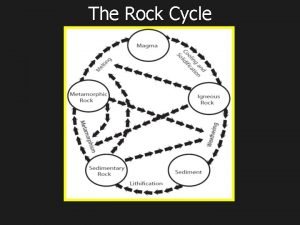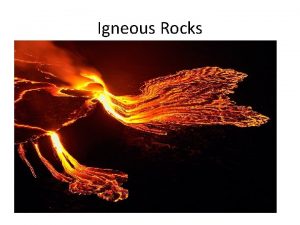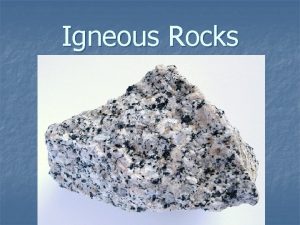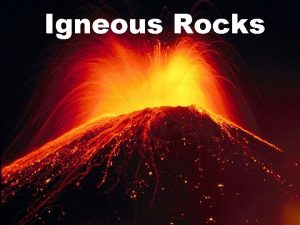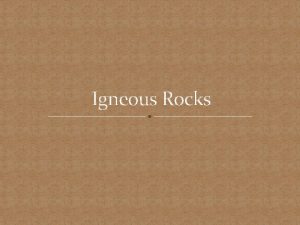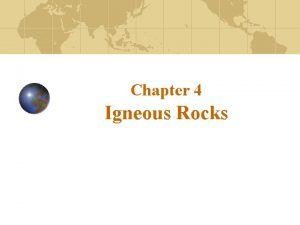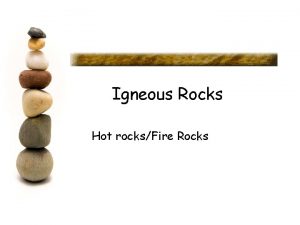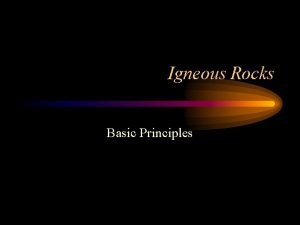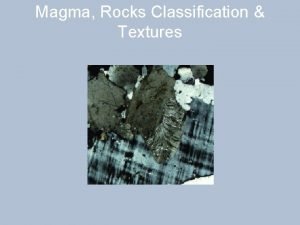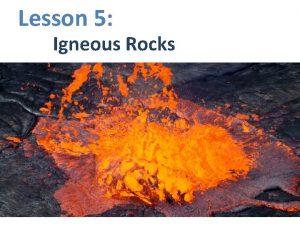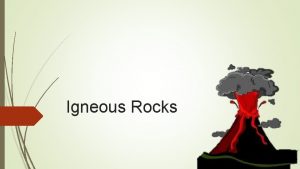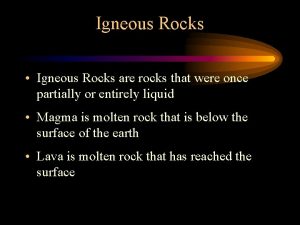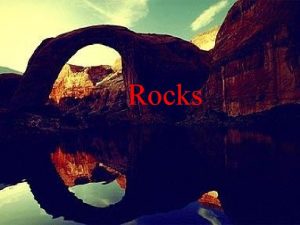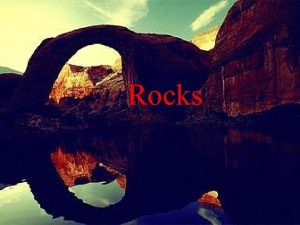Chapter 4 Igneous Rocks General characteristics of magma

















































- Slides: 49

Chapter 4 Igneous Rocks

General characteristics of magma • Igneous rocks form as molten rock cools and solidifies • General characteristics of magma: • Parent material of igneous rocks • Forms from partial melting of rocks • Magma at surface is called lava

General characteristics of magma • General characteristic of magma • Rocks formed from lava = extrusive, or volcanic rocks • Rocks formed from magma at depth = intrusive, or plutonic rocks

General characteristics of magma • The nature of magma • Consists of three components: – Liquid portion = melt – Solids, if any, are silicate minerals – Volatiles = dissolved gases in the melt, including water vapor (H 2 O), carbon dioxide (CO 2), and sulfur dioxide (SO 2)

General characteristics of magma • Crystallization of magma • Cooling of magma results in the systematic arrangement of ions into orderly patterns • The silicate minerals resulting from crystallization form in a predictable order • Texture - size and arrangement of mineral grains

Igneous textures • Texture is used to describe the overall appearance of a rock based on the size, shape, and arrangement of interlocking minerals • Factors affecting crystal size • Rate of cooling – Slow rate = fewer but larger crystals – Fast rate = many small crystals – Very fast rate forms glass

Igneous textures • Factors affecting crystal size • % of silica (Si. O 2) present • Dissolved gases

Igneous textures • Types of igneous textures • Aphanitic (fine-grained) texture – Rapid rate of cooling – Microscopic crystals – May contain vesicles (holes from gas bubbles) • Phaneritic (coarse-grained) texture – Slow cooling – Large, visible crystals

Aphanitic texture

Phaneritic texture

Igneous textures • Types of igneous textures • Porphyritic texture – Minerals form at different temperatures – Large crystals (phenocrysts) are embedded in a matrix of smaller crystals (groundmass) • Glassy texture – Very rapid cooling of lava – Resulting rock is called obsidian

Igneous textures • Types of igneous textures • Pyroclastic texture – Fragmental appearance produced by violent volcanic eruptions – Often appear more similar to sedimentary rocks • Pegmatitic texture – Exceptionally coarse grained – Form in late stages of crystallization of granitic magmas

Porphyritic texture

Glassy texture

Igneous compositions • Igneous rocks are composed primarily of silicate minerals • Dark (or ferromagnesian) silicates – Olivine, pyroxene, amphibole, and biotite mica • Light (or nonferromagnesian) silicates – Quartz, muscovite mica, and feldspars


Igneous compositions • Granitic versus basaltic compositions • Granitic composition – Light-colored silicates – Termed felsic (feldspar and silica) in composition – High amounts of silica (Si. O 2) – Major constituent of continental crust

Igneous compositions • Granitic versus basaltic compositions • Basaltic composition – Dark silicates and calcium-rich feldspar – Termed mafic (magnesium and ferrum, for iron) in composition – Higher dense than granitic rocks – Comprise the ocean floor and many volcanic islands

Basaltic lava dropping into the ocean along Kilauea Volcano along the southeastern coast of the big island of Hawaii

Igneous compositions • Other compositional groups • Intermediate (or andesitic) composition – Contain 25% or more dark silicate minerals – Associated with explosive volcanic activity • Ultramafic composition – Rare composition that is high in magnesium and iron – Composed entirely of ferromagnesian silicates

Igneous compositions • Silica content as an indicator of composition • Exhibits a considerable range in the crust – 45% to 70% • Silica content influences magma behavior • Granitic magmas = high silica content and viscous • Basaltic magmas = much lower silica content and more fluid-like behavior


Igneous compositions • Naming igneous rocks – granitic rocks • Granite – Phaneritic – Over 25% quartz, about 65% or more feldspar – Very abundant - often associated with mountain building – The term granite includes a wide range of mineral compositions

Granite

Igneous compositions • Naming igneous rocks – granitic rocks • Rhyolite – Extrusive equivalent of granite – May contain glass fragments and vesicles – Aphanitic texture – Less common and less voluminous than granite

Rhyolite

Igneous compositions • Naming igneous rocks – granitic rocks • Obsidian – Dark colored – Glassy texture • Pumice – Volcanic – Glassy texture – Frothy appearance with numerous voids

Pumice is very glassy and sharp, with countless vesicles.

Igneous compositions • Naming igneous rocks – intermediate rocks • Andesite – Volcanic origin – Aphanitic texture • Diorite – Plutonic equivalent of andesite – Coarse grained

Andesite

Diorite

Igneous compositions • Naming igneous rocks – basaltic rocks • Basalt – Volcanic origin – Aphanitic texture – Composed mainly of pyroxene and calciumrich plagioclase feldspar – Most common extrusive igneous rock

Basalt

Igneous compositions • Naming igneous rocks – mafic rocks • Gabbro – Intrusive equivalent of basalt – Phaneritic texture consisting of pyroxene and calcium-rich plagioclase – Significant % of the oceanic crust

Gabbro

Igneous compositions • Naming igneous rocks – pyroclastic rocks • Composed of fragments ejected during a volcanic eruption • Varieties – Tuff = ash-sized fragments – Volcanic breccia = particles larger than ash


Origin of magma • Highly debated topic • Generating magma from solid rock • Role of heat – Temperature increases in the upper crust (geothermal gradient) average between 20 o. C to 30 o. C per kilometer of depth – Rocks in the lower crust and upper mantle are near their melting points – Any additional heat may induce melting

Origin of magma • Role of pressure – Increases in confining pressure cause an increase in a rock’s melting temperature – When confining pressures drop, decompression melting occurs • Role of volatiles – Volatiles (primarily water) cause rocks to melt at lower temperatures – Important factor where oceanic lithosphere descends into the mantle

Decompression melting

Evolution of magmas • A single volcano may extrude lavas exhibiting very different compositions • Each volcanic eruption tends to exhibit a unique geochemical fingerprint, defined by trace element percentages • Bowen’s reaction series • Minerals crystallize in a systematic fashion based on their melting points • During crystallization, the composition of the liquid portion of the magma continually changes

Bowen’s reaction series

Evolution of magmas • Processes responsible for changing a magma’s composition • Magmatic differentiation – Separation of a melt from earlier formed crystals • Assimilation – Changing a magma’s composition by the incorporation of surrounding rock bodies into a magma

Magma evolves as the hotter minerals crystallize and settle to the bottom of the magma chamber

Evolution of magmas • Processes responsible for changing a magma’s composition • Magma mixing – Two chemically distinct magmas may produce a composition quite different from either original magma

Assimilation, magma mixing, and magmatic differentiation

Evolution of magmas • Partial melting and magma formation • Incomplete melting of rocks is known as partial melting • Formation of basaltic magmas – Most originate from partial melting of ultramafic rock in the mantle at oceanic ridges – Large outpourings of basaltic magma are common at Earth’s surface

Evolution of magmas • Partial melting and magma formation • Formation of andesitic magmas – Produced by interaction of basaltic magmas and more silica-rich rocks in the crust – May also evolve by magmatic differentiation

Evolution of magmas • Partial melting and magma formation • Formation of granitic magmas – Most likely form as the end product of crystallization of andesitic magma – Granitic magmas are more viscous than other magmas so they tend to lose their mobility before reaching the surface – Tend to produce large plutonic structures
 Igneous vs sedimentary or metamorphic
Igneous vs sedimentary or metamorphic Igneous rock to metamorphic rock
Igneous rock to metamorphic rock Three types of rocks
Three types of rocks Scoria silica content
Scoria silica content Igneous rock texture
Igneous rock texture What is rock cycle
What is rock cycle Chapter 5 igneous rocks
Chapter 5 igneous rocks Chapter 5 igneous rocks
Chapter 5 igneous rocks Hardened magma squeezed into vertical spaces between rocks
Hardened magma squeezed into vertical spaces between rocks Concept map for igneous rocks
Concept map for igneous rocks Massive igneous rocks
Massive igneous rocks Sedimentary rocks concept map
Sedimentary rocks concept map Non-banded grains
Non-banded grains Classification of rocks concept map
Classification of rocks concept map Geologic features
Geologic features Organic sedimentary rocks
Organic sedimentary rocks Igneous rocks
Igneous rocks Intrusive rock definition
Intrusive rock definition Venn diagram of intrusive and extrusive igneous rocks
Venn diagram of intrusive and extrusive igneous rocks Intrusive igneous rocks texture
Intrusive igneous rocks texture What are the physical properties of igneous rocks
What are the physical properties of igneous rocks How is intrusive igneous rock formed
How is intrusive igneous rock formed Phaneritic texture
Phaneritic texture Concept map for igneous rocks
Concept map for igneous rocks Rock
Rock Rocks formation
Rocks formation How are metamorphic rocks formed
How are metamorphic rocks formed Igneous rocks
Igneous rocks Igneous rock
Igneous rock Igneous rocks
Igneous rocks Sedimentary igneous rocks
Sedimentary igneous rocks Sedimentary igneous rocks
Sedimentary igneous rocks Cementation sedimentary rocks
Cementation sedimentary rocks Extrusive igneous rocks example
Extrusive igneous rocks example The rock cycle song
The rock cycle song Inequigranular texture igneous rocks
Inequigranular texture igneous rocks Vesicular rock
Vesicular rock Igneous rock appearance
Igneous rock appearance Properties of igneous rocks
Properties of igneous rocks List the types of rocks
List the types of rocks Igneous rocks
Igneous rocks Aphanetic
Aphanetic Igneous rock
Igneous rock How igneous rocks are formed
How igneous rocks are formed Igneous rocks
Igneous rocks How igneous rocks are formed
How igneous rocks are formed Tamer abu-alam
Tamer abu-alam How igneous rocks are formed
How igneous rocks are formed Iugs classification of igneous rocks
Iugs classification of igneous rocks Igneous rocks pronounce
Igneous rocks pronounce


